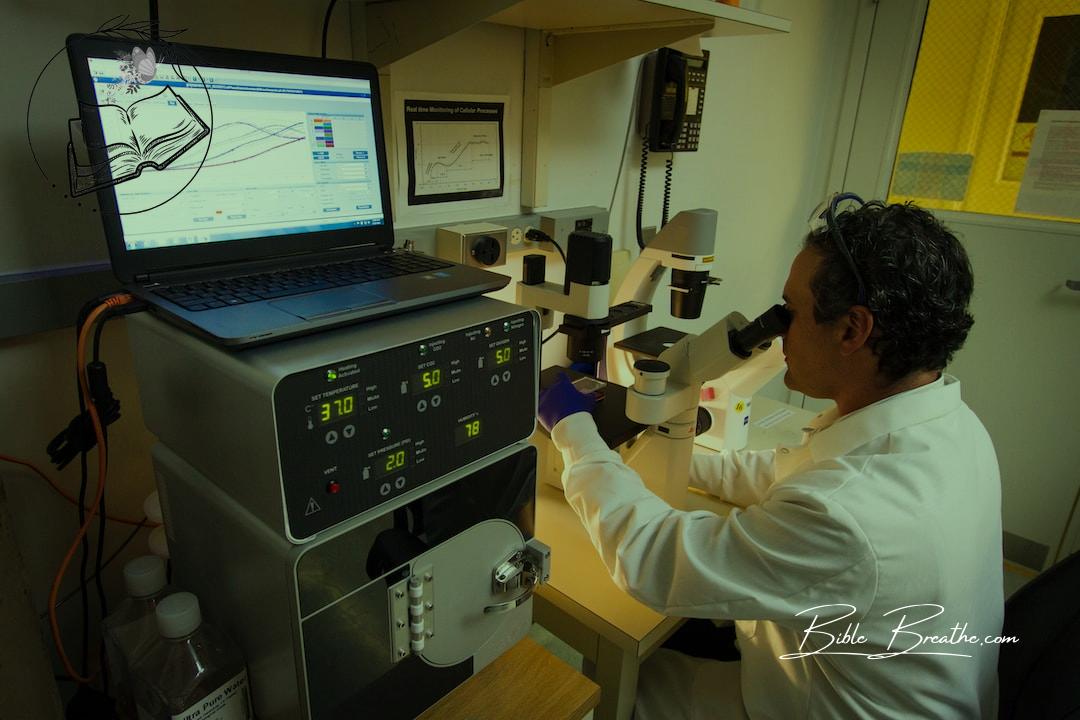Genesis 1:27 kicks off the Bible’s epic creation saga!
Imagine this: God’s artistic genius culminates in humans being made in His image.
Yeah, you heard that right!
It’s like God took His paintbrush and said, “Let’s create something mind-blowing!
So, He molds us in His divine likeness—male and female, boom!
Now, why’s this verse a big deal?
It’s the blueprint for understanding our identity as God’s masterpiece!
You’re not just a random piece of the puzzle; you’re part of the divine artwork, carrying God’s stamp within you.
Think of it as being designed with a heavenly sparkle, mirroring God’s character—His love, creativity, and compassion.
It’s not just about outer appearance; it’s the whole package!
God’s purpose in this creative extravaganza?
To show off His image through us, showcasing His goodness and grace.
So, when we dig into Genesis 1:27, we’re peeling back layers of God’s plan for us.
It’s about understanding our worth, purpose, and how we fit into God’s grand design.
So God created man in his own image, in the image of God created he him; male and female created he them.” – Genesis 1:27 (KJV)
Key Takeaways
- Genesis 1:27 proclaims the profound truth that God created humanity in His own image, bestowing upon us a divine likeness and inherent worth.
- This scripture underscores the intentional design and purpose behind our creation, emphasizing our unique position in the vast tapestry of God’s creation.
- In a world often riddled with self-doubt and identity crises, Genesis 1:27 offers a grounding truth: our value isn’t determined by societal standards but by our divine Creator.
- It challenges today’s generation to view themselves and others through the lens of God’s love, fostering respect, dignity, and unity among diverse communities.
- By internalizing the message of Genesis 1:27, we can combat the negative narratives of our culture, standing firm in our identity as beloved creations of an intentional and purposeful God.
Genesis 1:27: Unveiling the Divine Portrait
Welcome, beloved community, to a profound journey into the very essence of our existence.
In Genesis 1:27, we unravel the captivating narrative of how humanity bears the indelible image of our Creator, intricately woven into the tapestry of the biblical creation story.
Verse of the Day:
“So God created man in his own image, in the image of God created he him; male and female created he them.” – Genesis 1:27, KJV
Basic facts of the verse:
| **Attribute** | **Value** |
|---|---|
| Book | Genesis |
| Chapter | 1 |
| Verse | 27 |
| Christian Bible part | Old Testament |
| KEYWORDs | Image of God, creation story, man and woman, divine likeness, God’s purpose |
| Topics | Creation, Humanity |
| Bible Themes | Divine Image, Purpose of Creation |
| People | God, Man, Woman |
| Location | Earth (contextual) |
As we delve into this sacred scripture, we encounter the profound truth that every man and woman is intricately fashioned in the divine likeness.
This revelation speaks to God’s purpose in our creation, reminding us of our unique role in the grandeur of His design.
Let this verse resonate in your hearts, unveiling the beauty of being crafted in the very image of our Creator.
Genesis 1:27 KJV Cross References
These are some Bible verses related to Genesis 1:27:
| **Cross Reference Verse (KJV)** | **Verse** |
|---|---|
| Genesis 5:1 | This is the book of the generations of Adam. In the day that God created man, in the likeness of God made he him. |
| Genesis 9:6 | Whoso sheddeth man’s blood, by man shall his blood be shed: for in the image of God made he man. |
| 1 Corinthians 11:7 | For a man indeed ought not to cover his head, forasmuch as he is the image and glory of God: but the woman is the glory of the man. |
| Colossians 3:10 | And have put on the new man, which is renewed in knowledge after the image of him that created him: |
| James 3:9 | Therewith bless we God, even the Father; and therewith curse we men, which are made after the similitude of God. |
| Ephesians 4:24 | And that ye put on the new man, which after God is created in righteousness and true holiness. |
| 1 Corinthians 15:49 | And as we have borne the image of the earthy, we shall also bear the image of the heavenly. |
| 2 Corinthians 3:18 | But we all, with open face beholding as in a glass the glory of the Lord, are changed into the same image from glory to glory, even as by the Spirit of the Lord. |
| Romans 8:29 | For whom he did foreknow, he also did predestinate to be conformed to the image of his Son, that he might be the firstborn among many brethren. |
Genesis 1:27: A Deep Dive into Its Historical and Cultural Significance

Photo modified by BibleBreathe.com. Original photo by Megan Sanford on Unsplash
When we leaf through the pages of the Biblical creation story, we’re transported to a time when the universe was in its infancy, taking its first steps.
Picture this: a blank canvas awaiting the strokes of the Divine Artist.
And then, in the midst of this divine narrative, we encounter Genesis 1:27.
But what did this verse mean in its original setting?
Ancient civilizations had a myriad of stories explaining the origins of man and the universe.
Yet, in this primordial backdrop, the Hebrew scriptures presented a revolutionary concept: humanity crafted in the Image of God.
Unlike neighboring cultures, where humans were often perceived as afterthoughts or slaves to deities, the Hebrew belief placed man and woman in a unique position – not just creatures, but mirrors of the Divine, reflections of His Divine likeness.
Considering the societal norms of ancient civilizations, where hierarchy and divisions were rife, envision the radical nature of this idea: every individual, regardless of their status, was imprinted with the image of the Divine.
Can you fathom the gravity of such a belief during those times?
This wasn’t just about creation; it unveiled God’s purpose in creation – a universe where every man and woman stands as a testament to God’s glory, majesty, and love.
This understanding challenges us to ponder: If the ancients, amidst their societal structures and beliefs, could grasp the weight of being made in the Image of God, what’s holding us back today?
Are we truly seeing our neighbors, our friends, even our adversaries, as bearers of that same divine image?
Genesis 1:27 isn’t just a verse; it’s an invitation – to view the world and its inhabitants through the lens of divine purpose and love.
How will you respond?
Genesis 1:27: Delving into the Divine Blueprint
Genesis 1:27 reads, “So God created mankind in his own image, in the image of God he created them; male and female he created them.”
- “So God created”: The phrase indicates an intentional act. It wasn’t a coincidence or an afterthought. In the grand tapestry of the Biblical creation story, this stands as a defining moment, a testament to God’s purpose in creation.
- “mankind in his own image”: This phrase is pivotal. The term “image” in Hebrew is “tselem”, hinting at a divine likeness or representation. We aren’t just another species on earth; we carry a reflection of the Divine. Every time we look in the mirror, we’re reminded of our origin, not from the dust, but from a divine blueprint.
- “in the image of God he created them”: A reiteration, emphasizing the importance of mankind’s divine origin. The duplication serves as a poetic device but also drives home a spiritual truth. We are, without a doubt, made in the image of God.
- “male and female he created them”: Beyond establishing gender, this emphasizes unity and equality. The man and woman in Scripture are both created with equal dignity, worth, and purpose.
Delving into the original Hebrew, the verse is rich with intent.
But what does it mean in the broader narrative?
Genesis is a foundation, the very bedrock of the biblical narrative.
This verse, in particular, sets the stage for the relationship between God and man, and our interactions with each other.
It underpins many themes: our intrinsic value, our purpose, and our connection to the Creator.
Isn’t it profound?
Our very essence, our DNA, is threaded with divinity.
In a world filled with questions of identity and worth, doesn’t it bring comfort to know our original design is rooted in perfection and purpose?
The blueprint doesn’t lie.
How are we living in line with our design today?
Genesis 1:27: God’s Masterpiece in Comparative Lights
Genesis 1:27 announces with clarity, “So God created man in His own image, in the image of God He created him; male and female He created them.” This proclamation in the Biblical creation story is more than just a historical recount; it’s a spiritual foundation for our identity.
But how does this narrative sit in the larger realm of religious stories?
Let’s embark on a journey, comparing it with other religious texts.
Similarities with other religious texts:
- Many ancient texts, from the Enuma Elish of Babylon to the Hindu Puranas, describe a divine likeness in the creation process. They echo that creation wasn’t accidental but purposeful.
- The notion of humans holding a special place, akin to the God’s purpose in creation, is common across tales like the Norse mythology where humans are crafted from trees, implying a divine touch.
- The duality of male and female, like the man and woman in Scripture, finds its mirror in various myths, including the Chinese Yin and Yang, emphasizing complementary forces.
Differences with other religious texts:
- While many creation stories stem from wars or conflicts among gods, the Biblical creation story showcases a singular, sovereign God acting out of love and purpose.
- Genesis uniquely underscores humanity’s role as stewards and caretakers of the earth, extending beyond just being a creation.
- Instead of humans being an afterthought or by-product, Genesis makes it clear: we are the crescendo, the climax, the magnum opus in God’s symphony of creation.
Imagine for a second, a world where every artist paints the same portrait, where every song sounds similar.
Boring, right?
It’s in the nuances, the differences, and the overlaps that we truly appreciate art.
In the same way, understanding the Image of God through different lenses not only enriches our faith but allows us to see the uniqueness of God’s love story for humanity.
So, as you delve deeper into your spiritual journey, remember: it’s in the comparisons that we often find the most profound connections.
Genesis 1:27 – Deciphering the Divine Image in Today’s Canvas
Genesis 1:27, a cornerstone in the Biblical creation story, proclaims, “So God created man in His own image, in the image of God He created him; male and female He created them.” Such a statement, rich in divine likeness, offers a buffet of interpretations.
From Roman Catholics to Jehovah’s Witnesses, every group paints a distinct hue on this canvas.
Let’s wade through these theological colors.
How different religious groups interpret the verse:
- Roman Catholicism: Man is an icon of the Divine, reflecting God’s intellect and freedom. This concept lays the foundation for human dignity, emphasizing both body and soul’s sacredness.
- Eastern Orthodox: The image of God means possessing divine attributes, potential for perfection, and communion with God. This perception also reinforces the Eastern Orthodox emphasis on theosis or deification.
- Protestantism: This group perceives it as humans reflecting God’s rationality, morality, and relationality. However, the Fall tarnished this image, which Jesus Christ restores.
- Seventh-day Adventists: Humans are a physical and spiritual reflection of God. While sin distorts this divine likeness, salvation restores it, emphasizing the God’s purpose in creation.
- Mormonism: They believe humans can evolve into gods, aligning with God’s purpose. Here, Genesis 1:27 underscores that potential godhood, a process known as exaltation.
- Jehovah’s Witnesses: The verse reflects the creation of perfect humans with the capacity to reflect God’s qualities, but not his omniscience or omnipotence.
As we step back, Genesis 1:27 remains pivotal in the broader biblical narrative, epitomizing God’s design and purpose.
Still, its interpretation becomes a playground for contemporary debates: gender roles, human worth, and the essence of man and woman in Scripture.
But consider this – If you were to sculpt an artwork, wouldn’t you put a bit of your soul into it?
Genesis 1:27 reminds us that we’re not just random strokes on life’s canvas but intentional, divine masterpieces.
How, then, will you reflect this masterpiece in today’s intricate world?
Genesis 1:27: Science Meets Scripture

Photo modified by BibleBreathe.com. Original photo by National Cancer Institute on Unsplash
Genesis 1:27 is like the blueprint of a master architect, revealing the grand design: “So God created man in his own image, in the image of God he created him; male and female he created them.” But how does this biblical creation story stand in the light of modern science?
Let’s embark on this exploration.
Scientific Perspectives:
In the vast expanse of the universe, where does humanity fit in?
Science, with its telescopes and microscopes, seeks to understand our origins.
Yet, Genesis 1:27 offers a profound perspective.
- Image of God: While science delves into DNA and genetics, the Bible speaks of a divine likeness. It’s like comparing a photograph to a painting. One captures the physical, the other, the essence.
- Biblical Creation Story vs. Evolution: Science posits the theory of evolution, tracing our ancestry back to primordial organisms. Yet, the Scripture speaks of an intentional, purposeful creation. Imagine a potter molding clay, each detail crafted with purpose. That’s the essence of Genesis 1:27.
- Man and Woman in Scripture: Science explores the biological differences between genders. The Bible, however, emphasizes the complementary nature of man and woman, both reflecting God’s purpose in creation.
- Divine Likeness: While science seeks to understand human consciousness and what sets us apart, the Bible offers a perspective of divine intent. It’s like being given a role in a grand play, scripted by the universe’s greatest playwright.
- God’s Purpose in Creation: Science aims to understand the ‘how’ of existence. The Bible delves into the ‘why’. It’s the difference between understanding the mechanics of a watch and appreciating the artistry behind its design.
In conclusion, while science and Scripture may approach the question of human existence from different angles, both offer unique insights.
Genesis 1:27 is not just a verse; it’s an invitation to understand our divine heritage and purpose.
So, as we gaze at the stars or look in the mirror, let’s remember: we are intricately designed, bearing the mark of the divine.
How’s that for a cosmic connection?
Genesis 1:27: Living in the Divine Likeness
Genesis 1:27 is like the artist’s signature on a masterpiece, declaring, “So God created man in his own image, in the image of God he created him; male and female he created them.” But beyond the poetic beauty of this verse, how does it translate into our daily grind?
Let’s dive into its practical application.
Purpose of Practical Application:
Ever stood before a mirror, pondering your reflection?
Genesis 1:27 is that spiritual mirror, revealing our divine likeness.
But it’s not just about seeing; it’s about living it out.
This section is your guide to embracing and embodying this divine image in your everyday life.
Real-life Implications:
- Image of God: Recognizing our divine origin transforms our self-worth. It’s like realizing you’re not just any painting, but a Picasso. Every interaction, decision, and thought is influenced by this inherent value.
- Biblical Creation Story: Understanding our place in the grand narrative gives purpose to our existence. It’s like finding out you’re the protagonist in an epic tale, not just a side character.
- Man and Woman in Scripture: Embracing the complementary nature of genders fosters mutual respect and collaboration. It’s like two instruments in an orchestra, distinct yet harmonious.
Step-by-Step Application:
- Morning Affirmation: Start your day by reminding yourself of your divine origin. It’s like calibrating your internal compass, ensuring you navigate the day with purpose.
- Decision-making Filter: Before making decisions, big or small, ask: “Does this align with my divine likeness?” It’s like checking if a piece fits in a puzzle.
- Interpersonal Interactions: Treat others as bearers of the divine image. It’s like handling a priceless artifact – with respect and care.
- Embrace Diversity: Celebrate the diverse expressions of the divine image in humanity. It’s like appreciating the varied colors in a mosaic, each adding to the beauty.
- End-of-Day Reflection: Before sleeping, reflect on moments you lived out your divine likeness and moments you missed the mark. It’s like a daily performance review, ensuring continuous growth.
In essence, Genesis 1:27 isn’t just a verse to be read; it’s a truth to be lived.
So, as you go about your day, remember: you’re not just flesh and bone; you’re a reflection of the divine.
Ready to live in that truth?
Understanding Genesis 1:27: Delving Deeper into Our Divine Likeness

Photo modified by BibleBreathe.com. Original photo by Kyle Broad on Unsplash
Genesis 1:27 resonates with many believers, reminding us that, “So God created man in His own image, in the image of God He created him; male and female He created them.”
This scripture stands as a pillar in the biblical creation story, underscoring our intrinsic value and relationship to God.
But have we ever paused to delve deeper?
How often do we meditate on the weightiness of being made in the image of God?
In today’s journey, we’ll explore some thought-provoking queries and real-life scenarios to help us grasp this truth better.
Exegetical questions and Critical Thinking for Engagement:
Navigating the depths of Scripture requires a heart poised for introspection and discovery.
Our belief that we are molded in the divine likeness has profound implications, and it’s crucial we genuinely engage with this notion.
Let’s start our exploration:
- What does it mean to you personally, to be made in the image of God?
- How does recognizing oneself in God’s image influence our daily interactions with others?
- In what ways does society deviate from the understanding that every person is made in the image of God?
- How does this verse challenge or affirm your understanding of gender roles, considering both man and woman are made in God’s image?
Envision these real-life scenarios:
- You encounter someone with a vastly different worldview or faith. How would you communicate and relate to this person, keeping in mind Genesis 1:27?
- You come across someone battling self-worth issues, uncertain of their value. How would you use this scripture to uplift and affirm them?
- In a world where discrimination still exists based on race, gender, or class – how does this verse challenge us to redefine our perspective?
Consider these recent news headlines:
- “Global Protests Emerge Fighting for Equality and Justice.” How can Genesis 1:27 be a foundational verse to guide the message of these protestors?
- “Rise in Mental Health Concerns as Isolation Increases.” In light of this news, how can the belief that we are made in the image of God provide solace and hope?
Diving into the depths of God’s purpose in creation is like drawing water from a well – every sip is refreshing, providing a clearer picture of our identity and purpose.
As we embrace the truths held within Genesis 1:27, we come to realize that our existence isn’t random.
We are a beautiful manifestation of God’s creativity, purposefully crafted in His likeness.
And just like a mirror reflects an image, may our lives reflect Him in every possible way.
Frequently Asked Questions (FAQs) About Genesis 1:27
What does Genesis 1:27 teach us about the creation of humanity?
Genesis 1:27 reveals that God created humanity in His image, highlighting the intrinsic value and dignity of every individual.
This verse underscores the unique position of humans as reflections of God’s nature, emphasizing equality and the sacredness of human life.
It forms the foundation for understanding the worth and purpose of each person.
How does the concept of being created in the image of God impact our understanding of human dignity?
The concept of being created in God’s image elevates human dignity.
Genesis 1:27 underscores that each person reflects God’s likeness, emphasizing inherent worth, value, and a divine purpose.
Recognizing this truth fosters respect, compassion, and the understanding that every individual possesses a unique, sacred dignity as a creation of God.
Are there other Bible verses that reinforce the idea presented in Genesis 1:27?
Genesis 1:27 declares that God created humanity in His image.
Other verses reinforcing this idea include Psalm 139:13-16, highlighting God’s intimate involvement in individual formation, and Ephesians 2:10, emphasizing believers as God’s workmanship, created for good works, collectively emphasizing the intrinsic value of each person.
In what ways does Genesis 1:27 influence our perspectives on gender and identity?
Genesis 1:27 states that humanity is created in God’s image, male and female.
This foundational truth shapes a Christian worldview on gender and identity.
It affirms the inherent dignity and equality of both genders, emphasizing the shared responsibility to reflect God’s image.
This verse counters cultural distortions and provides a biblical foundation for understanding human identity and relationships.
Can you elaborate on the cultural and historical context surrounding the creation narrative in Genesis 1:27?
In the cultural and historical context of Genesis 1:27, the narrative reflects ancient Near Eastern cosmology.
The emphasis on humans created in God’s image sets them apart from other ancient creation stories, highlighting the inherent value and dignity of every individual as a reflection of the divine.
This counters prevailing views of the time, affirming the uniqueness of humanity.
Matt Turner
I’m Matt, and I love breaking down Bible verses in a way that’s easy to understand and apply to everyday life. My goal is to help you connect with God’s Word and find practical ways to live it out. Whether you’re new to the Bible or just looking for some fresh insights, I’m here to walk with you and share what I’ve learned along the way.

